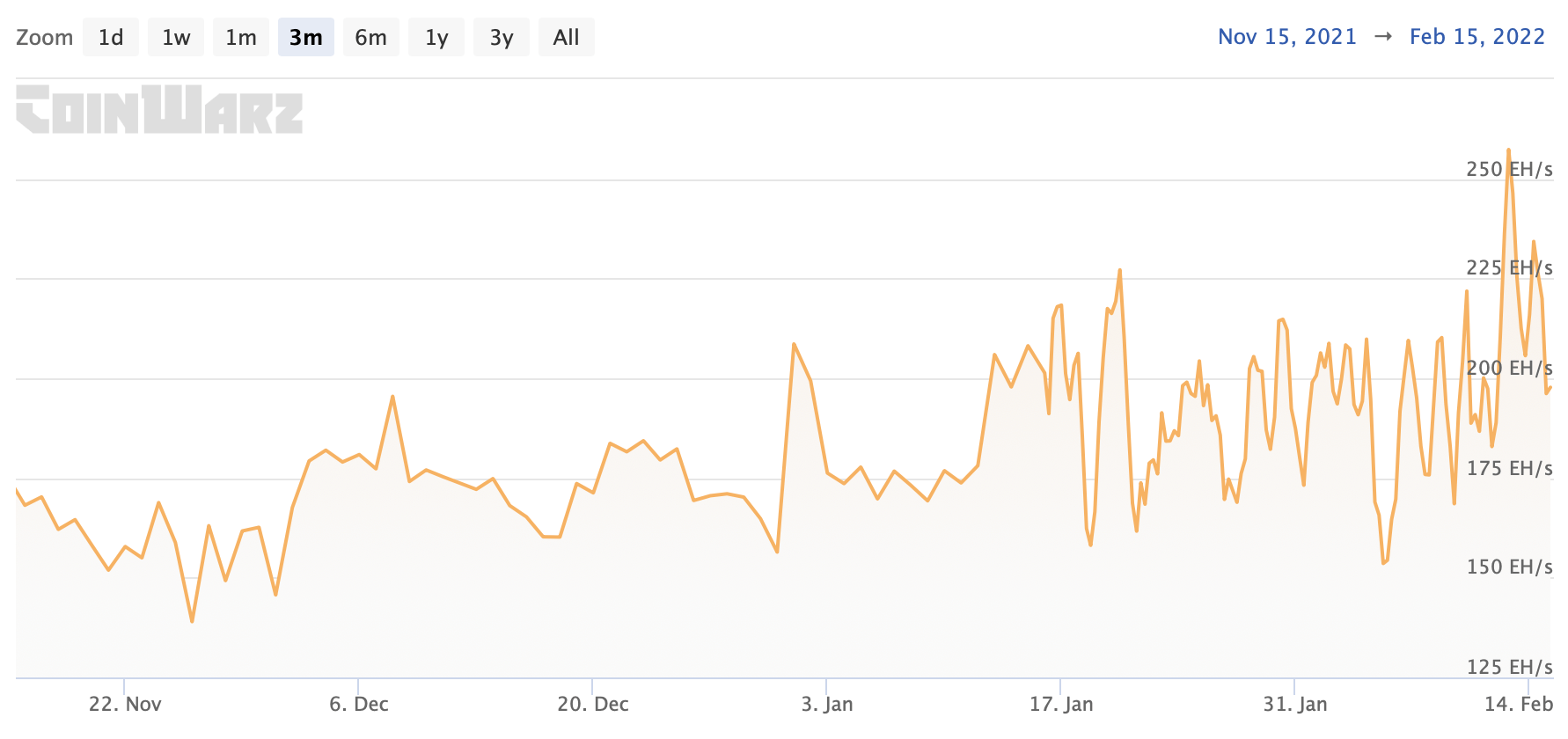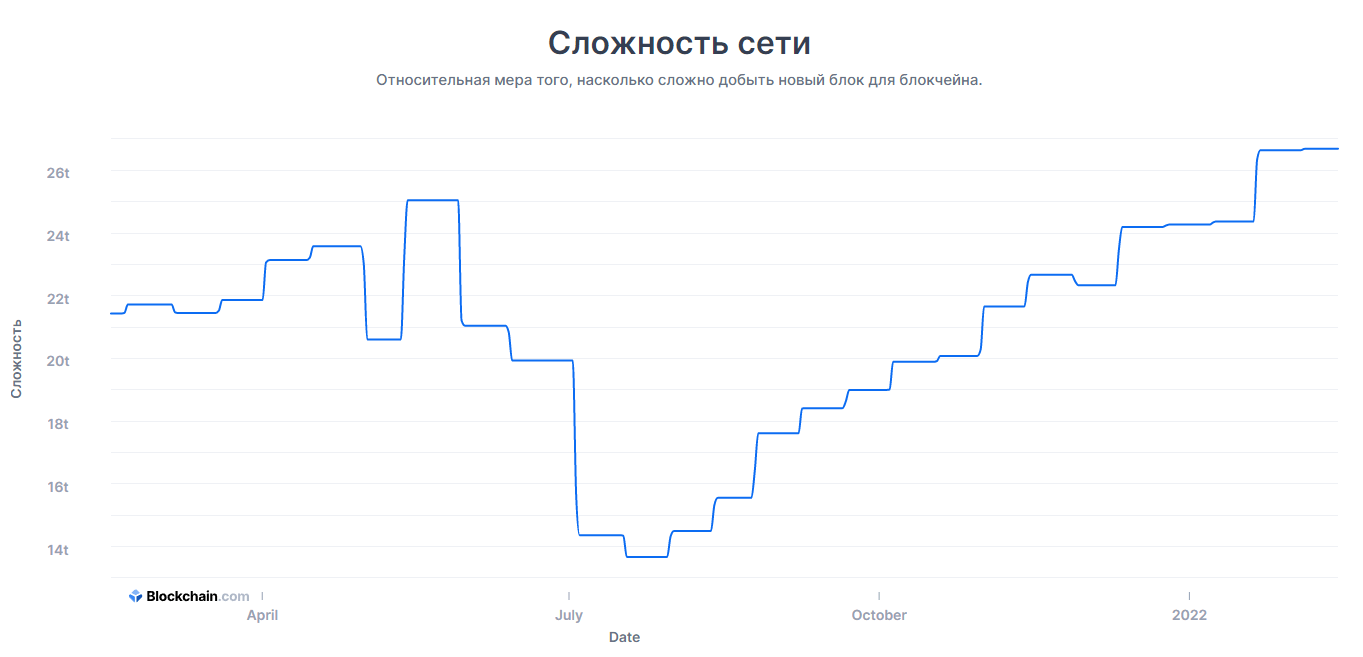The Bitcoin network’s hash rate has reached a new all-time high. What does this tell us?
The Bitcoin network’s hash rate once again reached a new all-time high by the end of last week. The total processing power of BTC miners’ devices rose to 263.82 exahexes per second. Thus, the cryptocurrency is now more protected from 51 percent attacks and other possible threats from detractors than ever before in its history. It’s also a great indicator of miners’ interest in their business and hope for further growth of the first cryptocurrency. We tell you more about the situation.

It should be noted that the topic of Bitcoin mining does not please everyone. For example, in November 2021, representatives of the Swedish financial supervisory authority proposed a complete ban on coin mining, as it allegedly threatens the climate. At the same time, officials do not see much point in enforcing various blockchains. Read more about this story in a separate article.
A new record for Bitcoin
Recall that in blockchains based on the Proof-of-Work (PoW) consensus algorithm, the hash rate is the total processing power of a network of devices. These can be video cards, processors or even special devices for mining BTC and other coins based on this network called ASIC miners. They are used to validate transactions and add blocks to the blockchain. Most importantly, cryptocurrency miners ensure consensus – that is, the agreement of network participants about what is happening on the network at a given time.
The higher the hash rate, the more secure the network, as it requires more processing power to successfully attack it. Thus, an increase in the number of miners essentially requires a large financial investment by possible detractors to create problems for the network, because leasing computing power requires money.

Bitcoin network hash rate graph for three months
According to Decrypt journalists, the new hash rate record also saw the highest Bitcoin mining difficulty. This is traditionally a bullish sign for the market, as it speaks to the rapid development of the infrastructure and all of Bitcoin from a fundamental perspective.
As a reminder, the goal of Bitcoin mining is to have an average block mining time of ten minutes. It's simple: if the number of miners in the BTC network doubles, they will find block solutions twice as fast. In that case, new bitcoins as rewards would appear twice as fast on the network, which would have a negative impact on the planned issuance and inflation rates.
In this case, the mining complexity tool will increase the difficulty of finding a solution to a cryptographic problem in proportion to the growth in the number of miners, i.e. by a factor of two. Accordingly, the block time will still average ten minutes.
Another recalculation of BTC mining complexity will take place this week. This procedure takes place every 2016 blocks, or approximately every fortnight. Given the recent increase in hash rate, the complexity should get even higher by about 3.24 percent.

Bitcoin mining complexity
Last year, Bitcoin’s hash rate experienced one of the biggest collapses in its history: between May and July, it dropped to 58 hashes per second. The reason for this was a complete ban on mining in China, a country that had previously been a major hub for cryptocurrency mining due to its relatively cheap and affordable electricity and proximity to computing hardware manufacturers.

ASIC miner for cryptocurrency mining
We believe that Bitcoin's active hash rate growth is a clear sign of positivity in the cryptocurrency industry. Still, this fact suggests that miners continue to buy equipment and actively engage in BTC mining. Accordingly, they see a future in the industry and are probably hoping for an increase in the value of digital assets in the future. And if they avoid selling coins for that purpose, such a calculation could well come true.
As you can see, even pressure from major countries cannot stop the development of crypto-innovation. And you can find even more interesting and useful information about crypto market in our chat room. There we will talk about other topics that affect the blockchain industry in one way or another.















